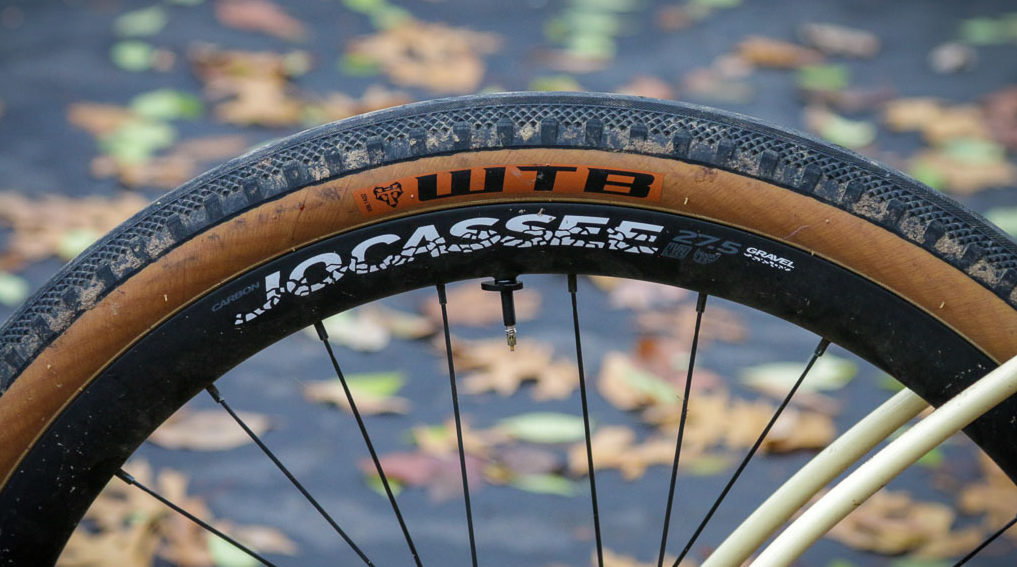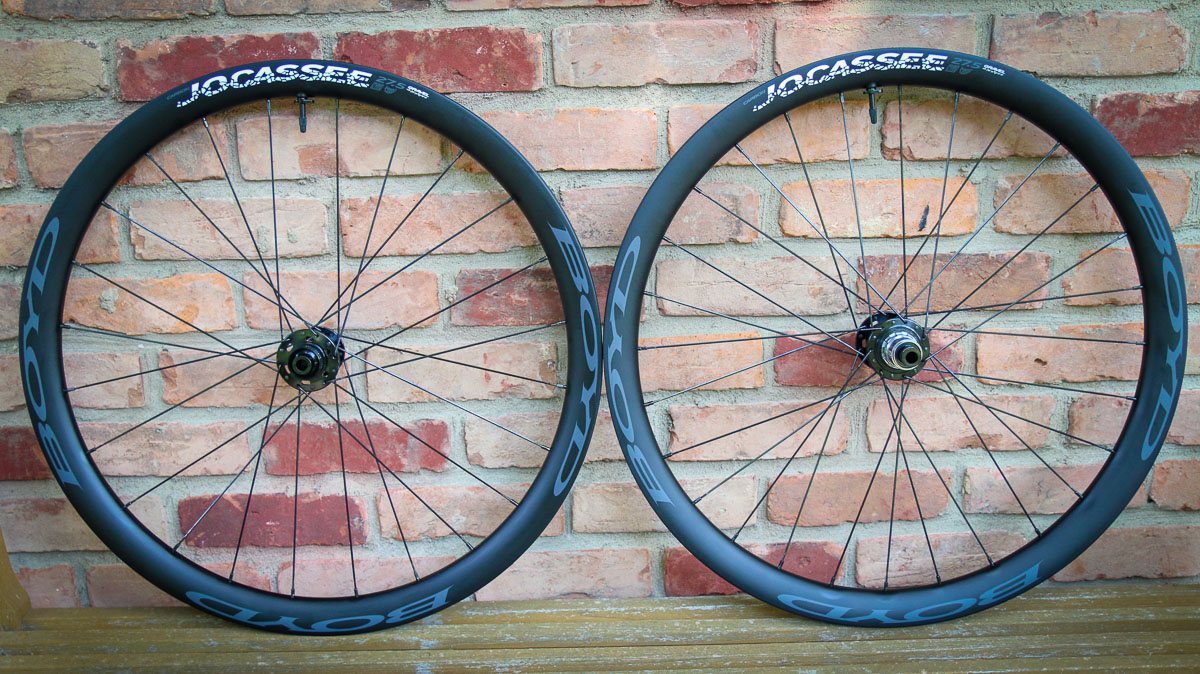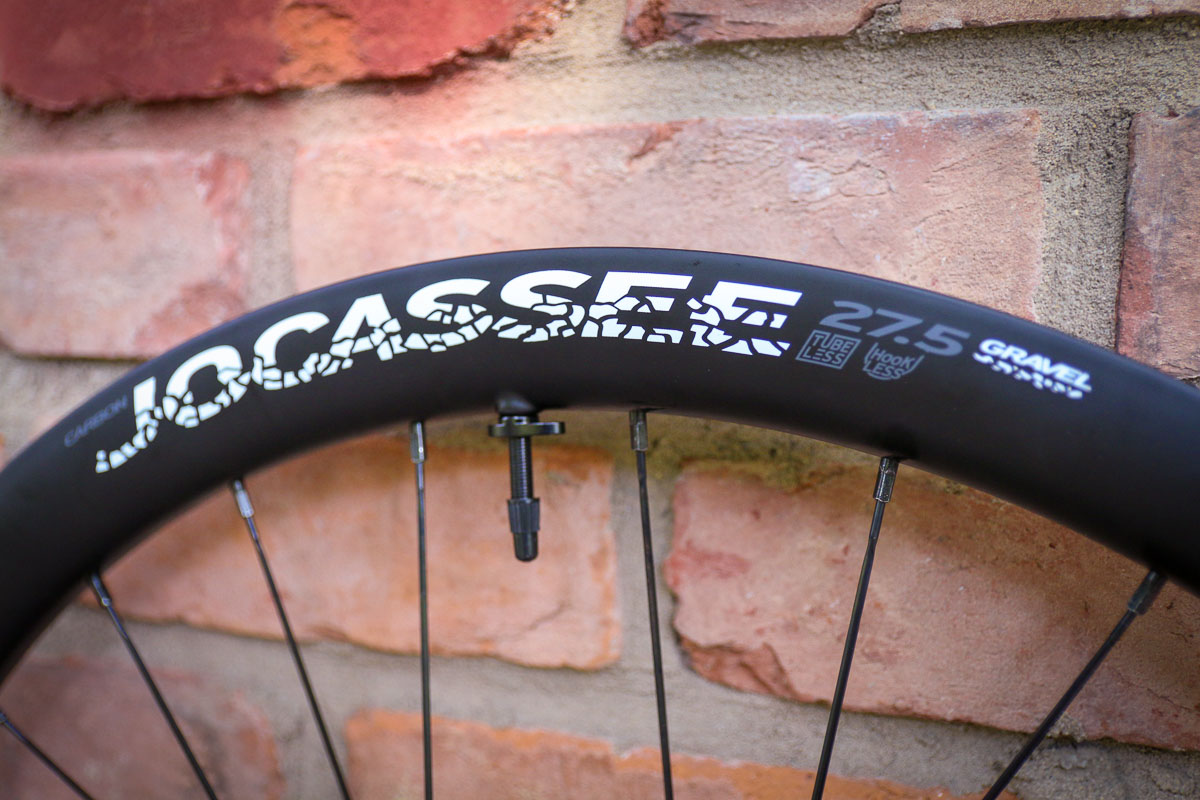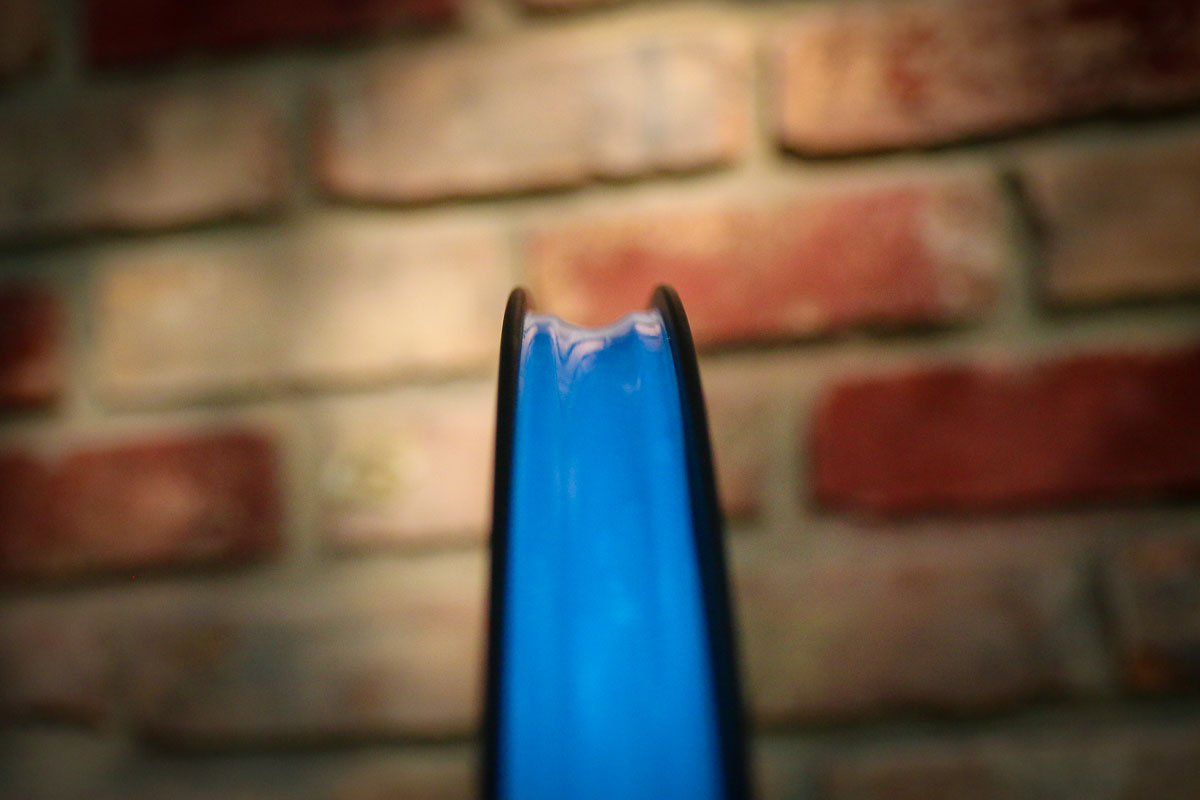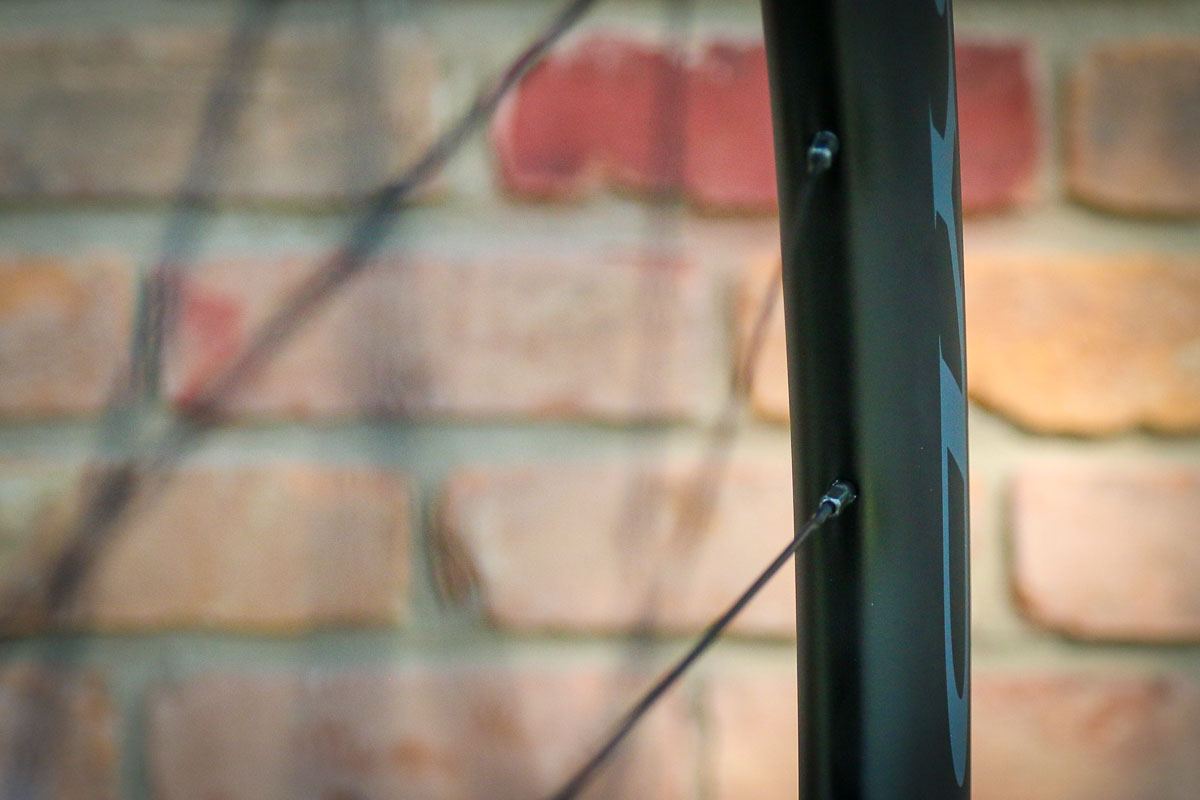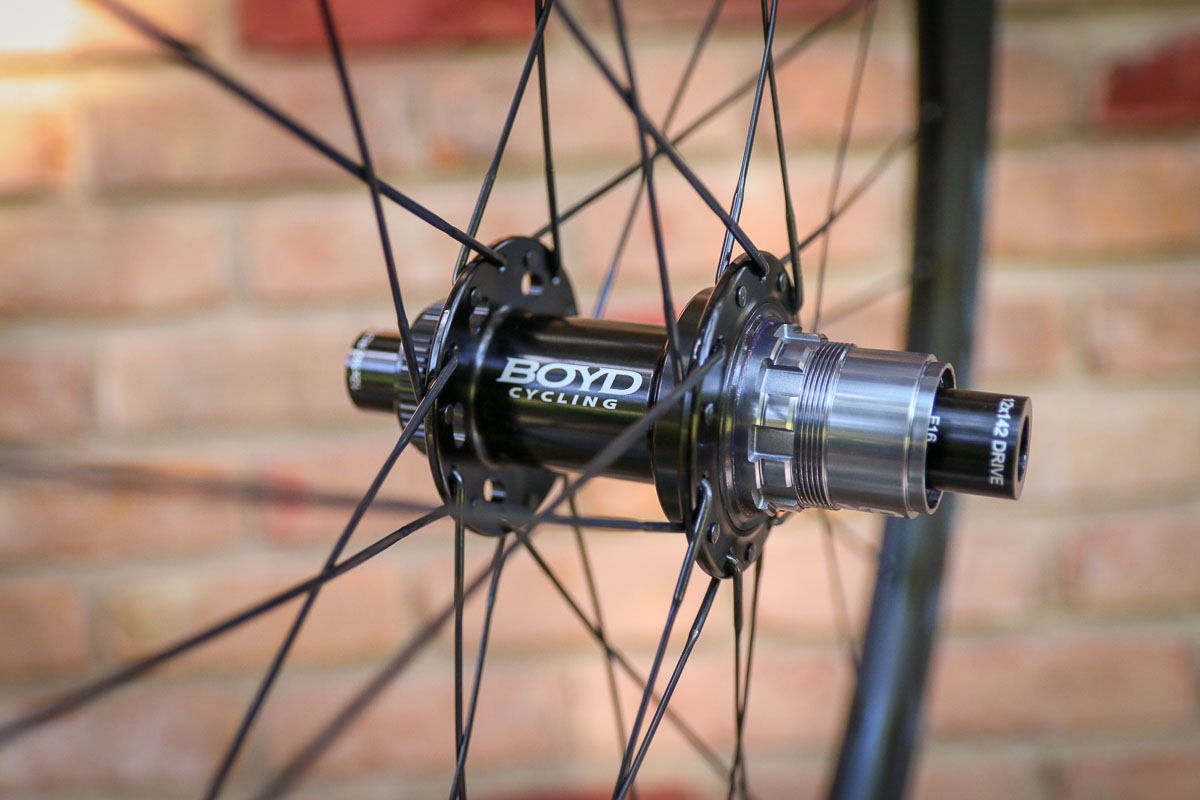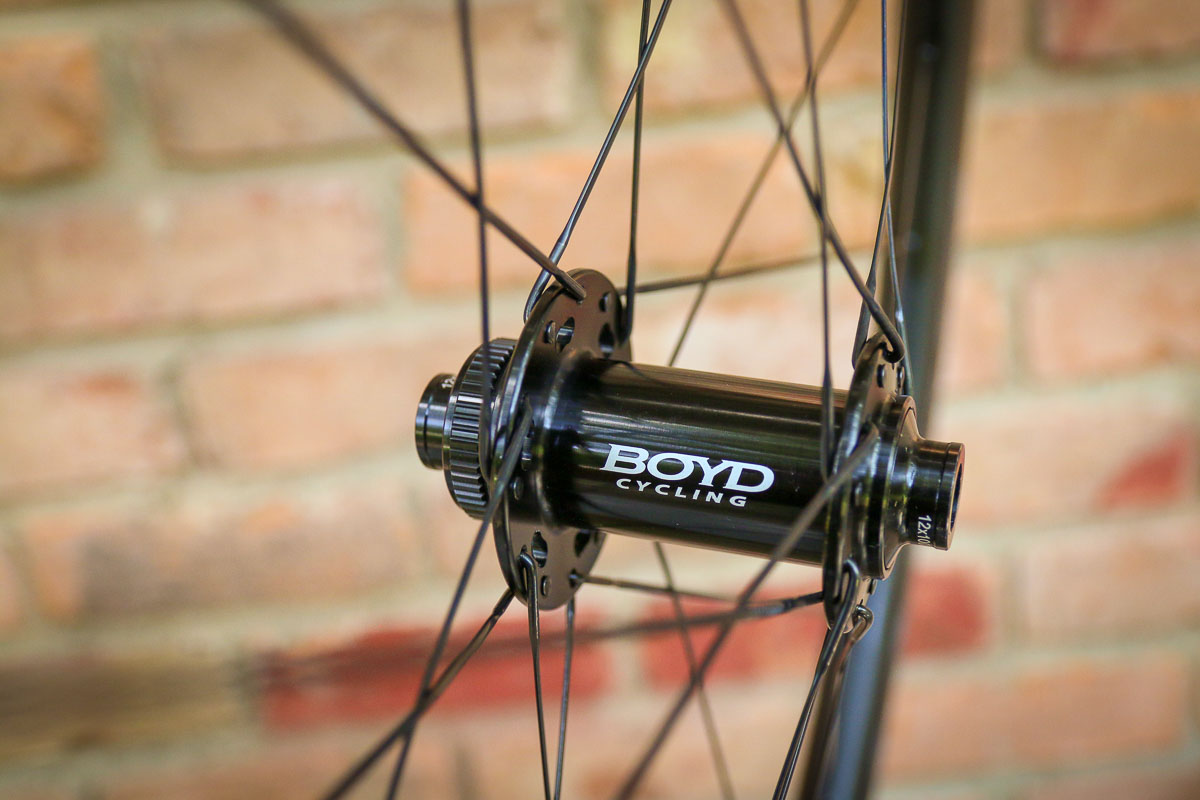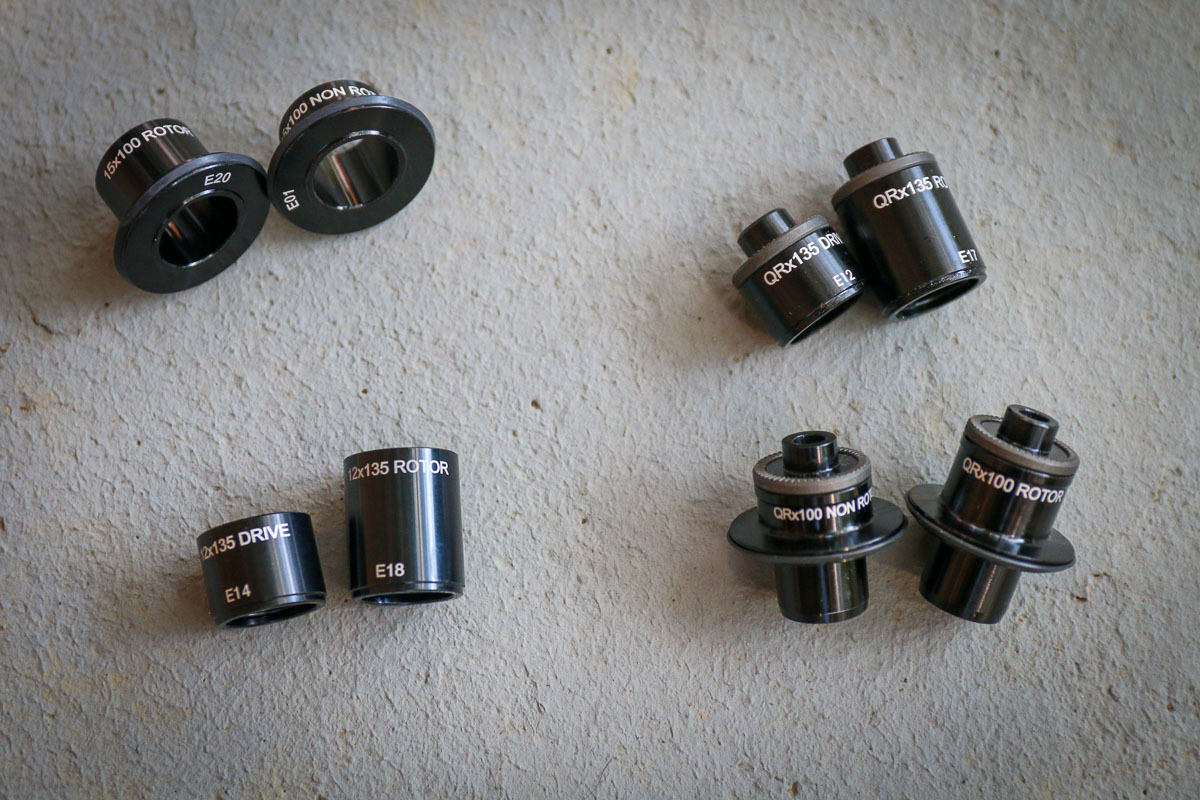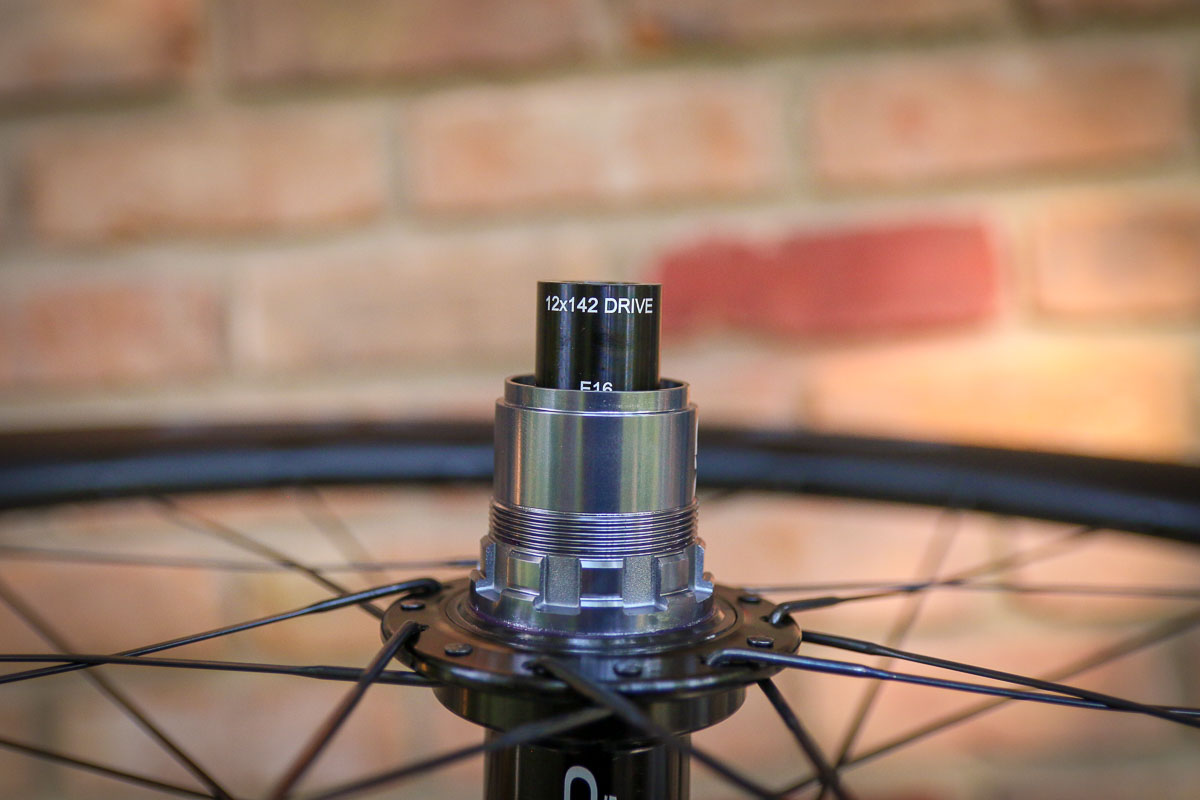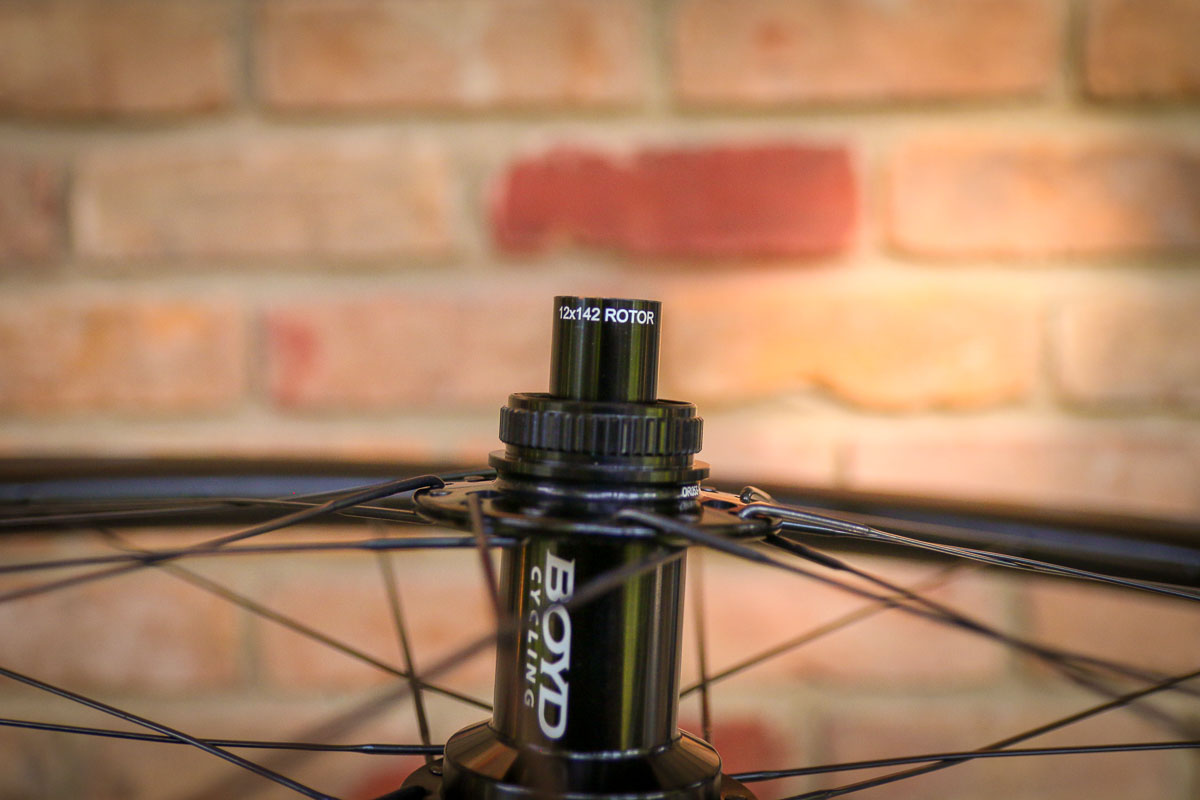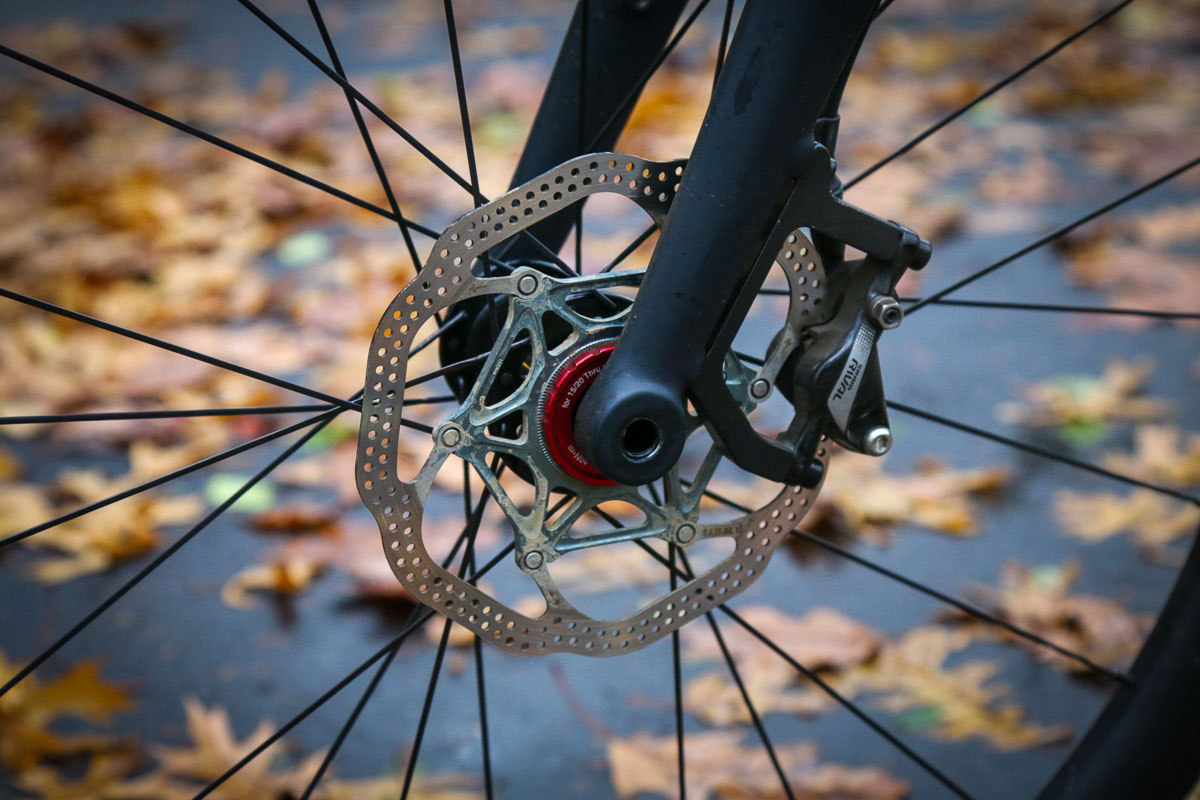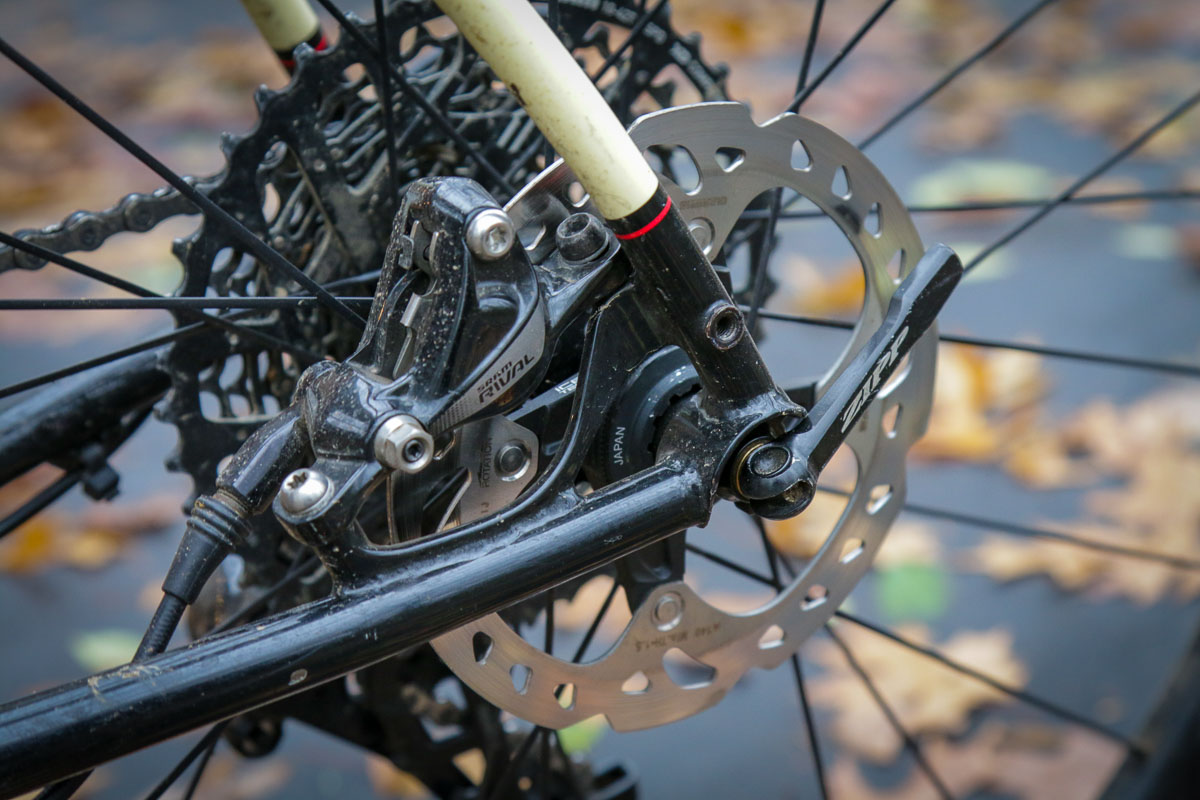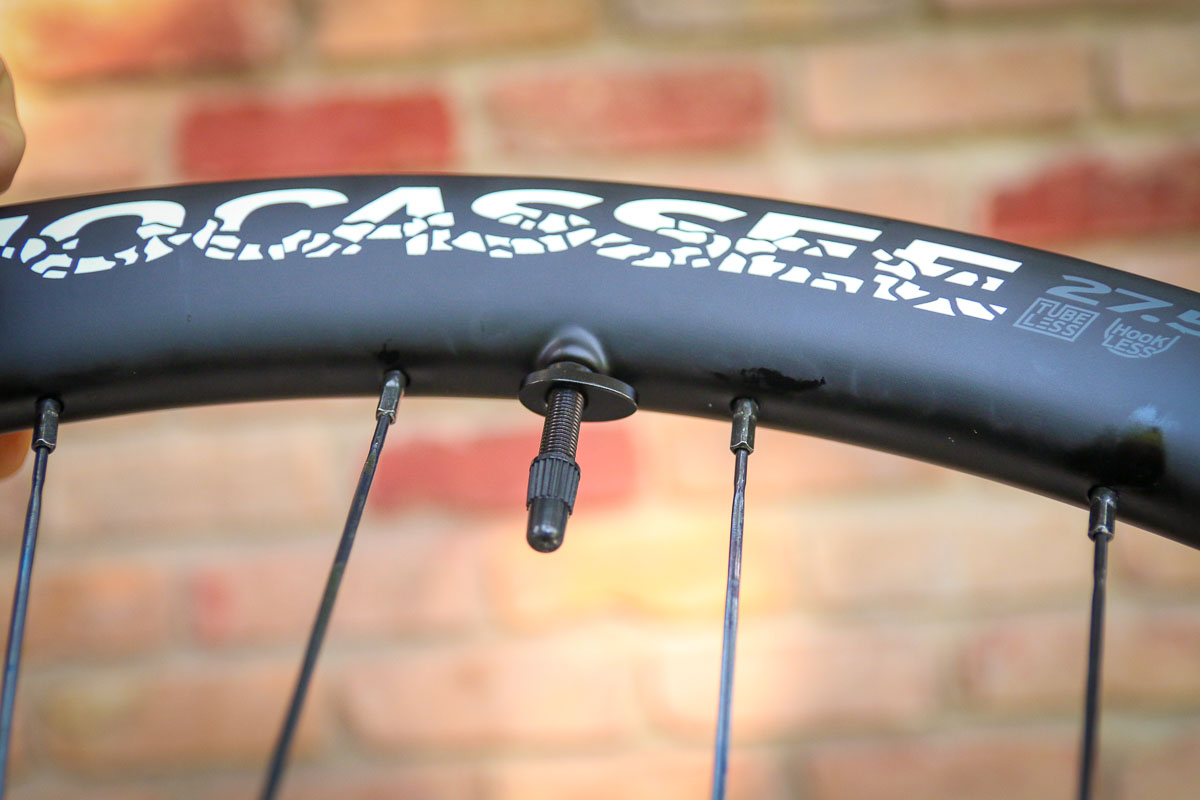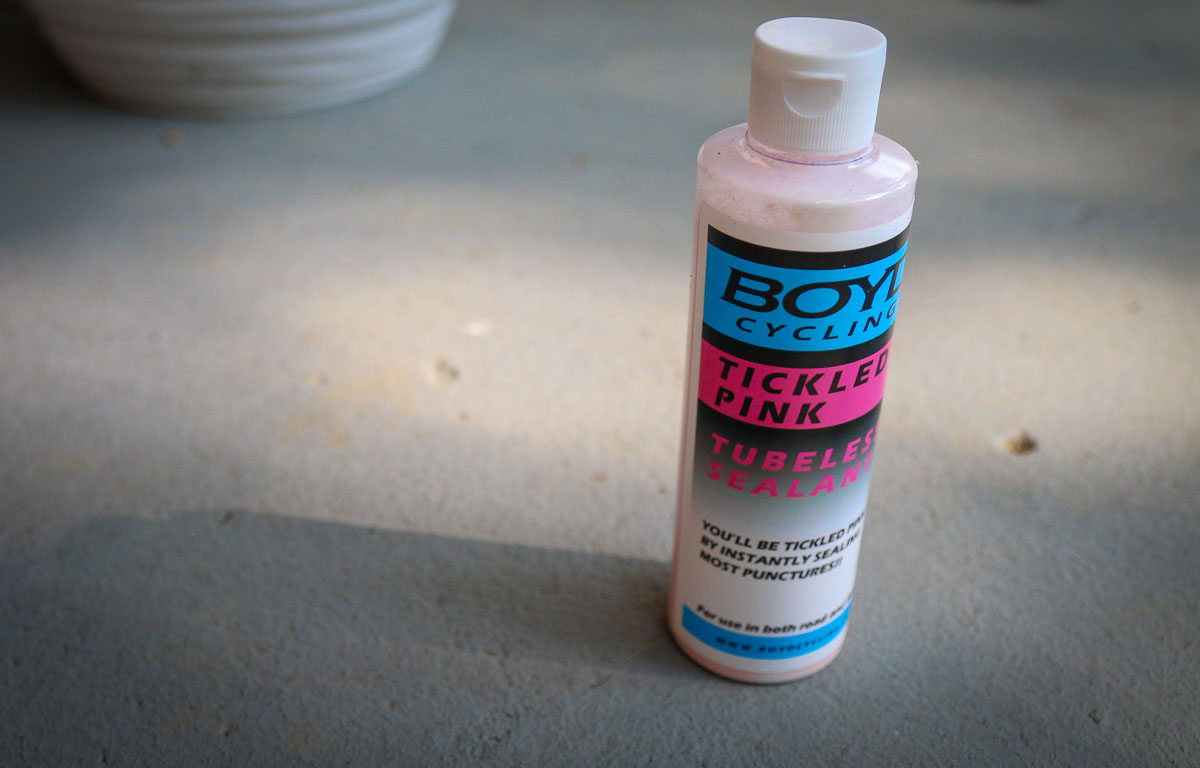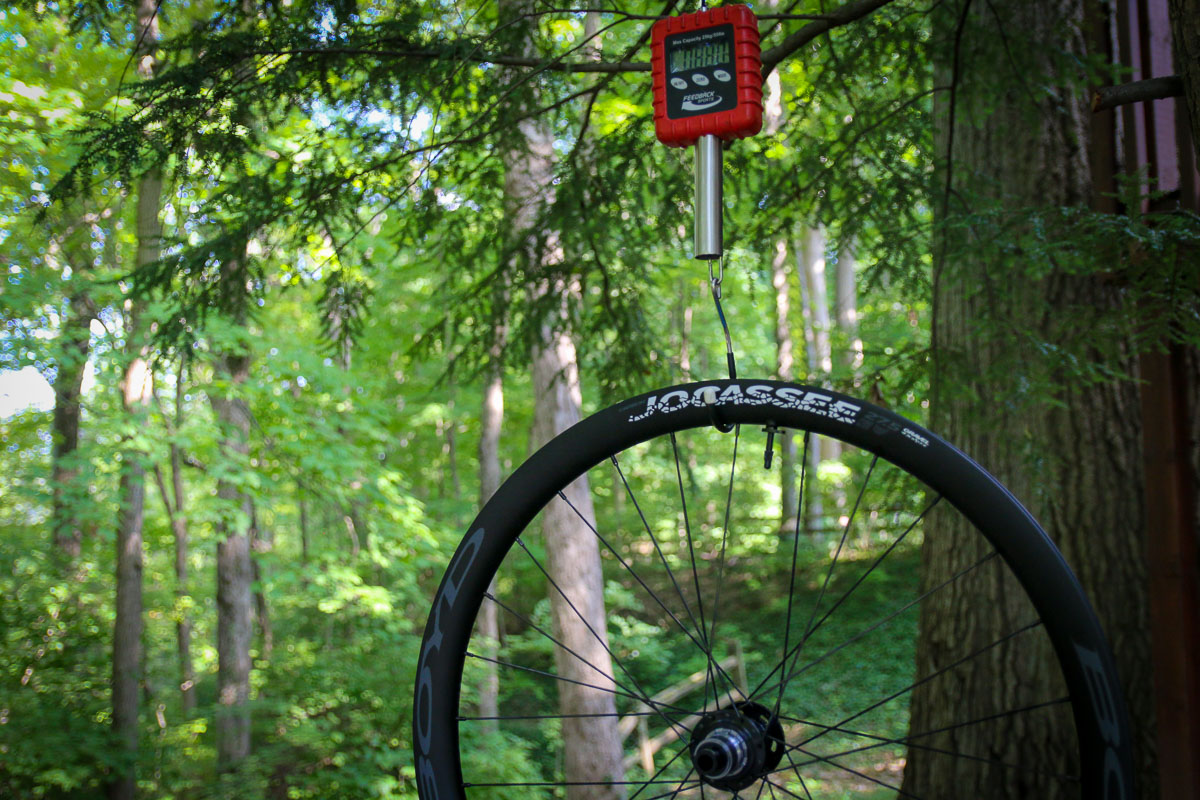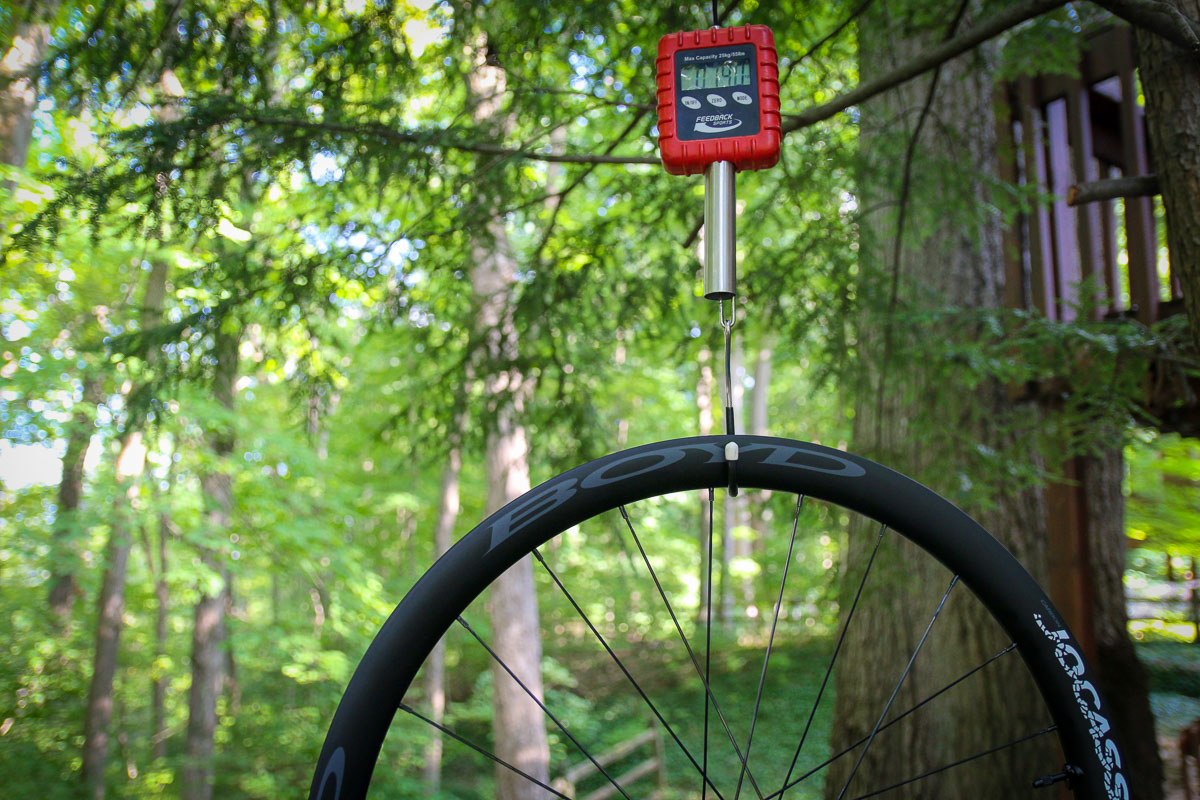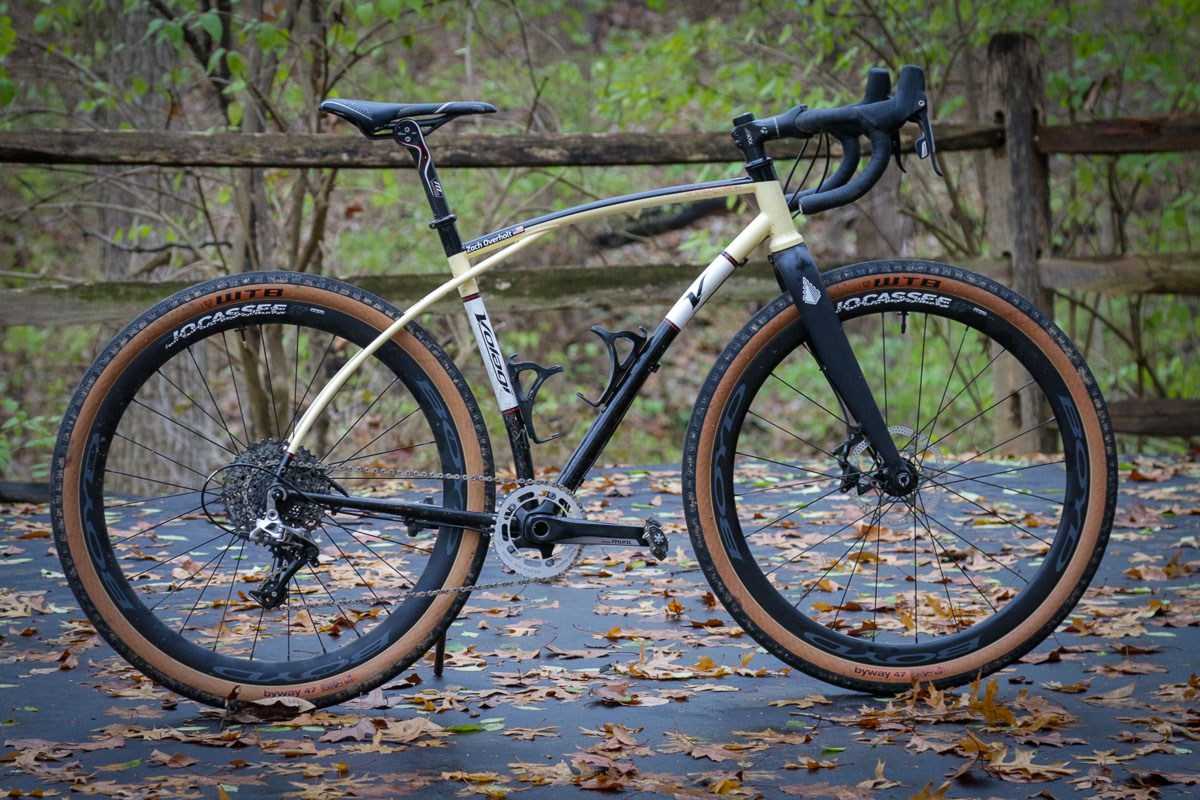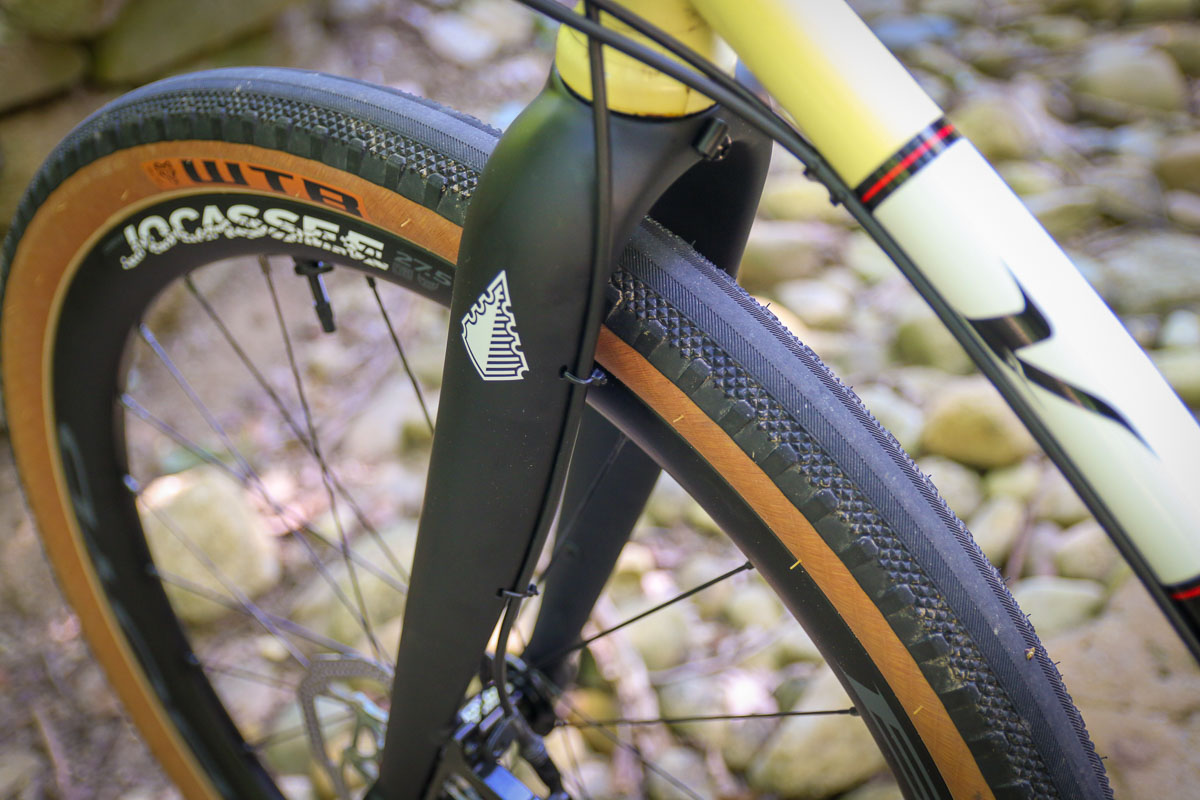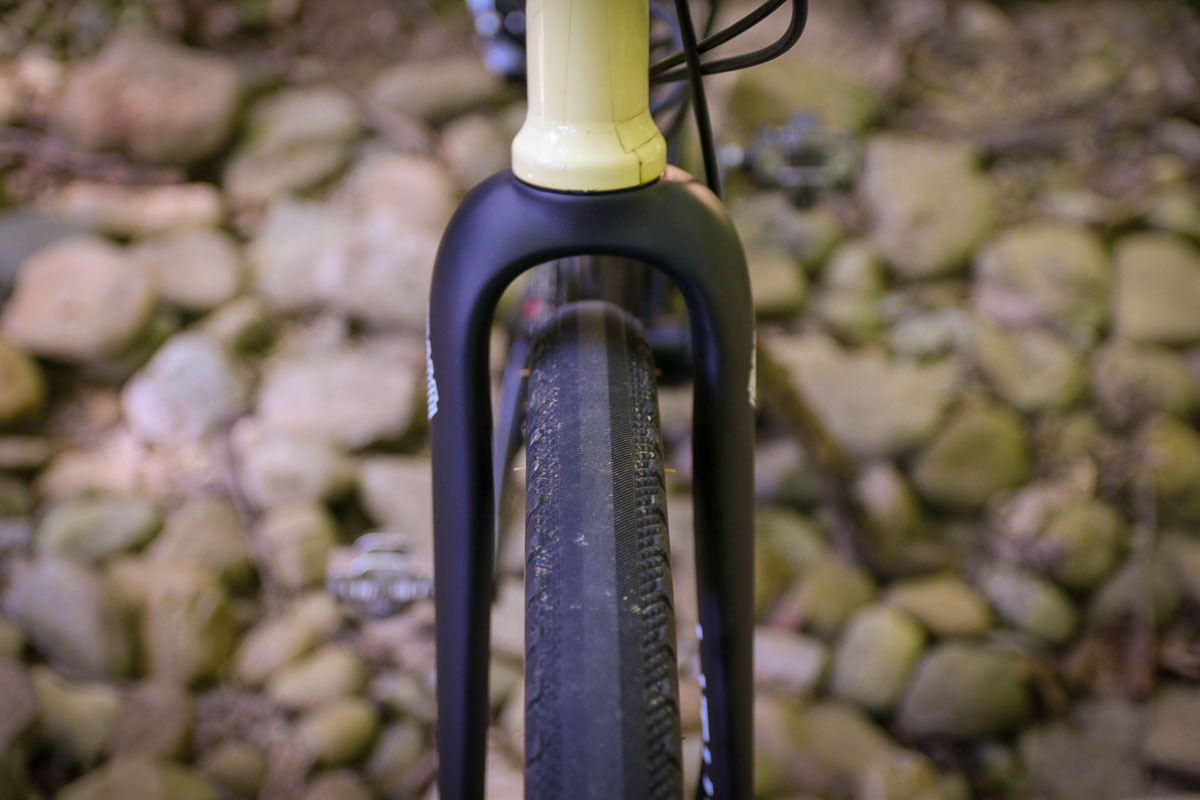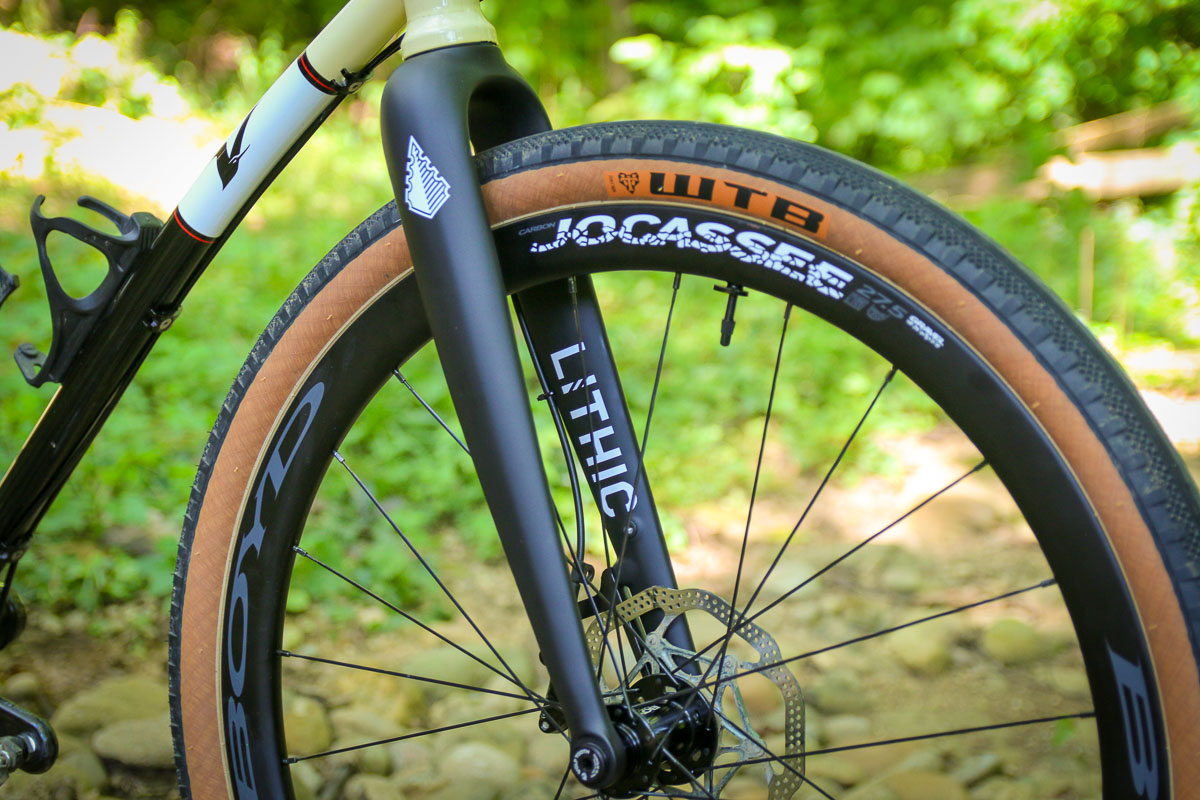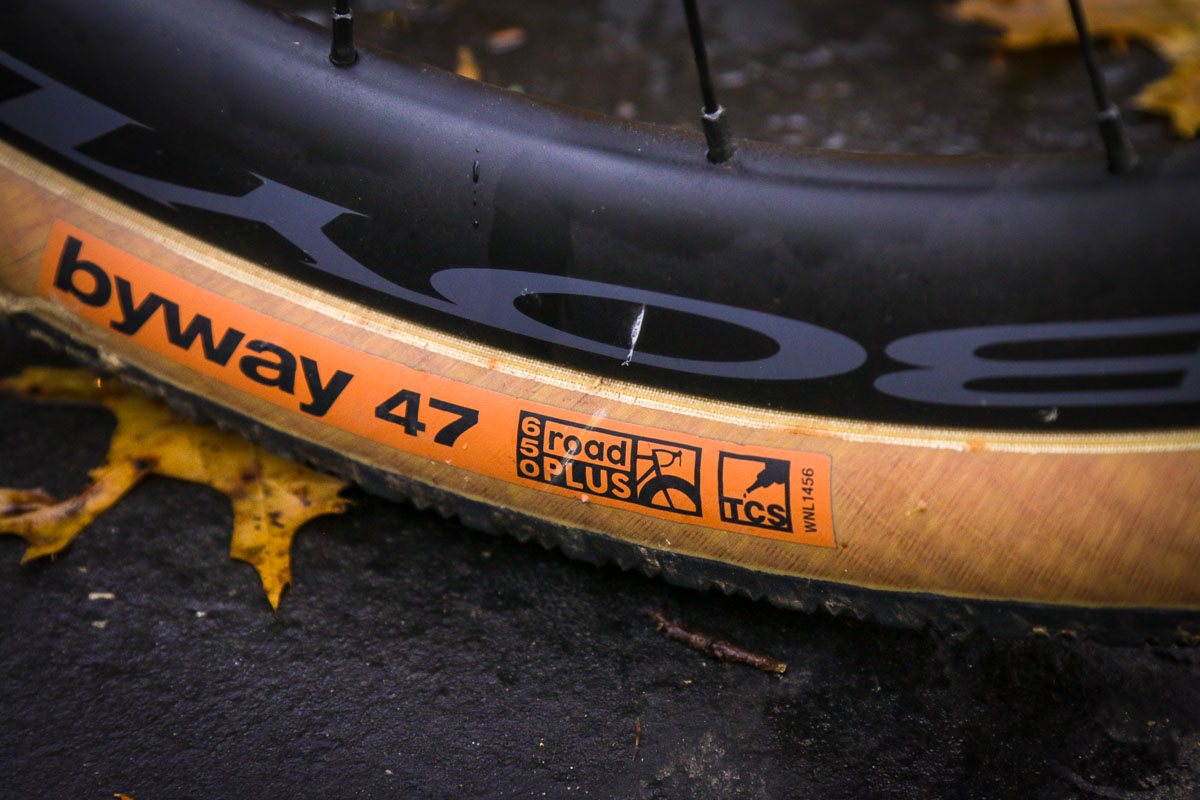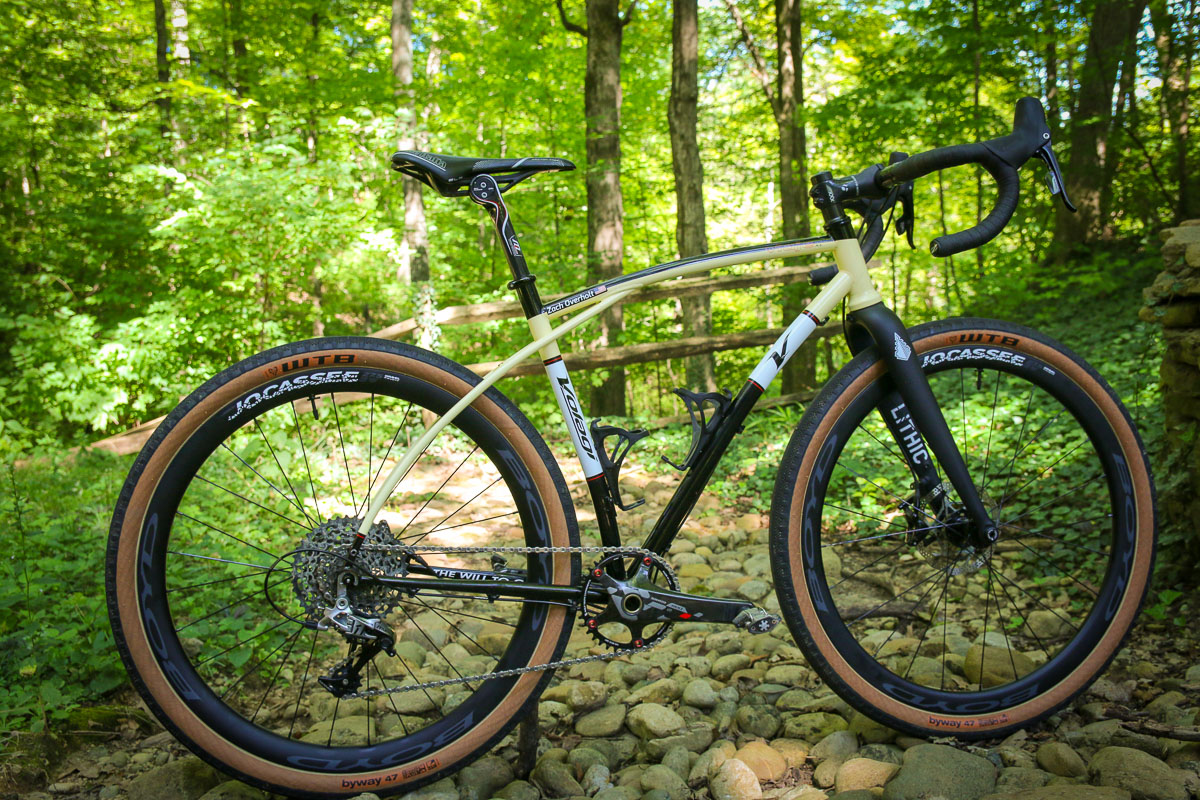There are more drop bar bikes than ever rolling on 27.5″ or 650b tires. Naturally, that has meant an increase in the number of drop bar specific 650b wheelsets meant to take on more rugged terrain. Not only that, but wheels like the Boyd Jocassee have been optimized around the 650b x 47mm tire size which seems to have gained the most traction for Road+. In the case of Boyd’s carbon gravel wheelset, the rims still offer an aerodynamic profile while offering a ride quality and durability worthy of off road pursuits.
Measuring in at 24mm internally, the hookless rim is purpose built for the wider tires that have become popular with this wheel size. The carbon rims are also 36mm deep which should provide some aero benefits at higher speeds – though the big tires will likely have the greatest effect on aerodynamics. Each rim has a 2.9mm offset for a more balanced wheel build, and a claimed rim weight of 430g.
Our test set was built up with the Boyd Cycling Quest Centerlock hubs with 28 Sapim CX Ray spokes and external brass nipples for durability.
The Boyd hubs deserve high marks for their end caps with convenient labeling which makes it much less of a pain to swap between axle standards. There are end caps available for QR front and rear, 12 or 15mm thru axle front, and 12 x 135 or 12 x 142mm rear thru axles as well.
The Quest hubs also have an excellent freehub with 6 pawls and 32t driver rings for 5° engagement. The freehubs are available in either SRAM/Shimano 11 speed, SRAM XD, or Campagnolo 9/10/11 currently.
For me, the hubs were good but far from perfect. Namely, the Centerlock splines were way out of spec, forcing me to run different rotors front and rear since a Shimano rotor wouldn’t fit on the front hub (fun fact, the tolerances in Centerlock rotors are vastly different from brand to brand!). According to Boyd, this was limited to the initial run of hubs and has since been fixed. Obviously, if you purchased a set, Boyd would take care of the issue and they offered to rebuild these wheels with new hubs. Or, you could just opt for White Industries hub upgrade which all but guarantees perfection.
The Jocassee wheels ship with tubeless tape and tubeless valves which include a clever locknut that is elongated for better grip. Keeping with the aero theme, they can be aligned with the rim for a more streamlined appearance.
For the duration of our test, the tires were sealed with Boyd’s Tickled Pink tubeless sealant which seemed to work quite well. The tires sealed instantly and there were no flats to report over hundreds of miles.
As for the weights, the complete wheels with tubeless tape and valves installed came in at 740g for the front and 880g for the rear, or 1620g for the set. That’s a bit more than the claimed 1550g, though that measurement likely doesn’t include tape or valves.
At the time I received the wheels, I didn’t have a bike that was purpose built for the 650b wheels and tires. But I did have a bike that I thought would be a great candidate for a conversion – my original Volagi Viaje prototype. That last bit is important since this prototype lacked the chainstay bridge which increases the amount of tire clearance at the chainstays. It’s tight, but it works with tires like the WTB Byway 47 and those without a lot of tread. The addition of the Lithic fork up front helped out a bunch as well. It’s so much stiffer than the stock fork and the addition of the thru axle is huge. Not to mention it has much more tire clearance than the original Viaje fork.
One of the things I appreciate about the Jocassees most, is that they’re not overly stiff. I find many carbon wheels to simply ride too stiff for my 155lb person. These seem to have a great ride quality without sacrificing the ability to quickly get up to speed.
They’ve also proven to be fairly durable with nothing but a few surface scratches where large rocks have flipped up into the rims.
While the hub issue would be unacceptable for a consumer, if it was truly a limited issue that has since been fixed, I wouldn’t hesitate to recommend these wheels. They’re properly wide for big tires, have a great ride quality, and they’re pretty light. And at $1,650 for the set they’re competitively priced. Like the last set of Boyd wheels that I’ve ridden (and still riding), the Jocassees are well thought out, durable wheels for the path less traveled.
